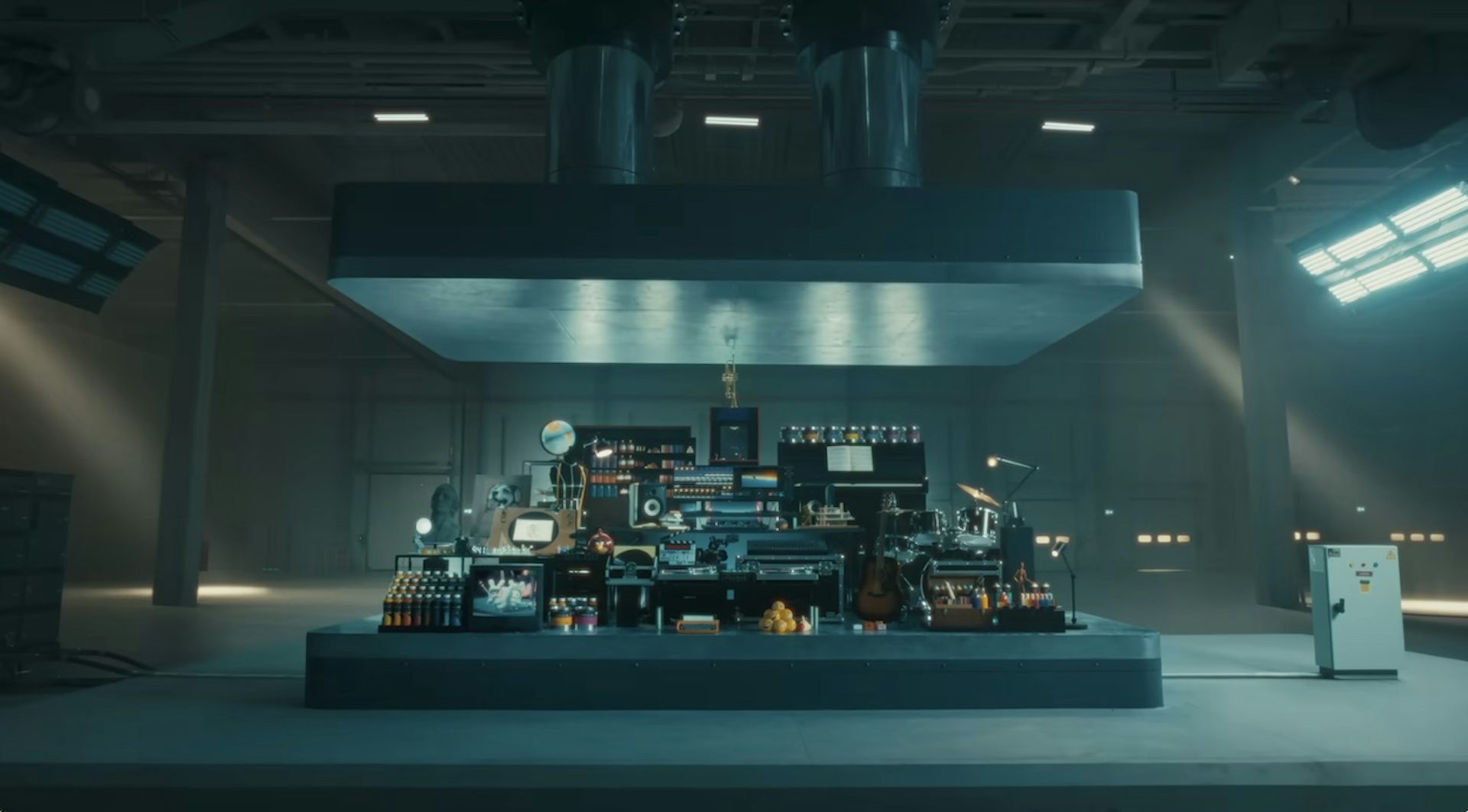Apple’s ‘crush’ Advert Annoys People Across The Generations – That’s Why It Misfired

After the dust settled, Apple accepted the ad didn't land as it hoped. Apple
There is a fine line between creativity and self-destruction. Apple’s new crush advert, which shows items linked to creative pursuits being pulverised to make way for the new iPad Pro, tried to find that line but instead appears to have made a rare mis-step. It has angered a lot of people in the process. Apple has now apologised and said it no longer plans to air the ad on TV.
Creative destruction is a term coined in the 1940s to describe revolutionising the economic structure from within – destroying the old one to make way for the new. Creative destruction is an essential factor of capitalism and, in Apple’s case, it used to be previously commonplace with the cannibalisation “by design” of products by new developments.
The advert seems to be a response to criticism about the lack of innovation due their incremental and iterative approach to product development in recent years. However, does their their latest offering just reinforce those claims?
To truly innovate, companies have to make tough decisions about whether to serve the current customer base with what they already do and are known for, or change to make way for the needs and wants of a new generation. In doing so, however, they risk alienating their current customer base.
Destruction of the human experience?When done well, creative destruction brings both customer bases along on the journey and transitions smoothly from one to the next. Apple’s iPad crush advert illustrates the company’s attempt at creative destruction both metaphorically and physically. In trying to be relevant to the younger audience by reflecting last year’s hydraulic crushing trend on TikTok, Apple unwittingly tapped into the generational divide. In doing so, it seems to have alienated both customer bases.
Dripping with nostalgia-triggering symbolism, the advert starts with the metronome, indicating time is ticking on physical pursuits. The record player starts up, crooning about time and “being down and all alone”, panning out to a wide shot of the tools of “classic” creative and leisure pursuits. It’s these items that have been at the centre of the furore, with actor Hugh Grant describing it as the destruction of the human experience, “courtesy of Silicon Valley”.
The advert moves from analogue hobbies like music, painting, graffiti and sculpting, to digital pastimes, showing Pac-Man, Angry Bird trinkets and DSLR cameras – all crushed under the metaphorical pressure of change. Even emojis, rejected by many young people, and therefore one of the clearest triggers of generational differences in the digital age, get the crushing treatment.
Target audience
This is where I argue that the advert shifts from passive to active aggression. It leaves both audiences in its metaphoric and actual dust. Then it clumsily ends on messaging that undermines everything that has gone before, about the iPad being the slimmest version so far. It fails at being innovative and is instead a reflection of a product iteration. Is thinner and stronger enough when you have pitted the digital natives against the analogue generations and those stuck in the middle?
The core Apple customers remember the joys of analogue and digital pursuits, with American baby boomers, generation X and millennials citing Apple as their favourite brand. Apple has topped the Interbrand Best Global Brands list year on year. However, I found the children and grandchildren they buy Apple products for are left feeling the ad is irrelevant and late to the crushing trend.
I showed this advert to a group of gen Z learners who are also working full-time – Apple’s future target consumer – to gauge their opinion. The first response was not one of admiration for the technology or innovation. It was one of contempt at a brand that had made a clumsy attempt at recreating a trend, like that uncle at the wedding trying to be down with the kids.
While they agreed that the crushed things fit into the iPad Pro, this wasn’t a positive message, with comments about sustainability issues and waste.
Human behaviour and perception lean towards building meaning from stimuli due to our context and understanding. Everyone will view the advert through their lens of experience, with musicians feeling triggered by the metronome and instruments, and artists by the sadness of paint moving to spray cans and then digitised altogether.
In a time when we increasingly need to come together, this advert pushes the audience apart and also runs contrary to the song that overlays the piece (All I Ever Need is You by Sonny and Cher).
The advert misses the mark in so many ways, and while creative destruction is the driver of change and innovation, consumers old and new need to be taken on the journey. While the current customer holds this brand dear and is now aware of the new features, the brand-building work looking towards the future fails.
Is it authentic to the Apple brand loyalists? Yes. But if it is trying to move in a new direction, signalling change and the passing of what has gone before, it fails to do so. It’s a lesson to all businesses that if they want radical change they must ensure that they walk the walk rather than tinkering at the edges. Otherwise, they risk drifting into irrelevance and becoming a nostalgic item like the things they are crushing.
Kim Watts does not work for, consult, own shares in or receive funding from any company or organisation that would benefit from this article, and has disclosed no relevant affiliations beyond their academic appointment.


